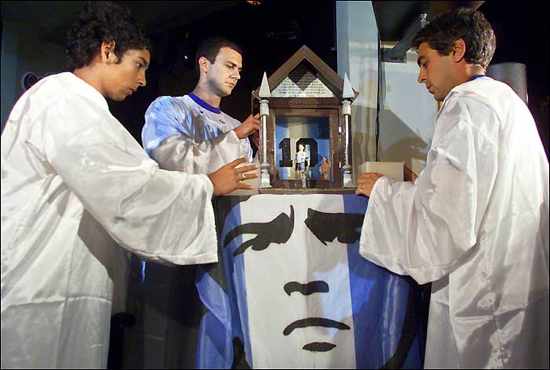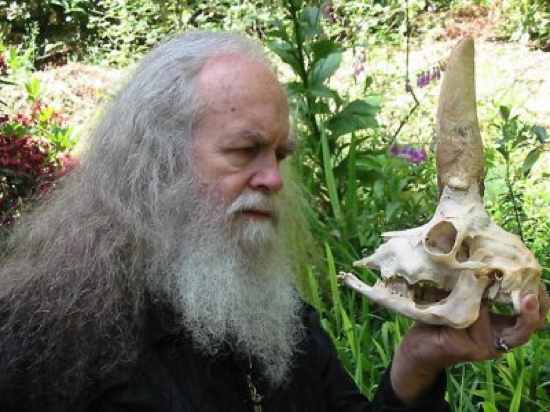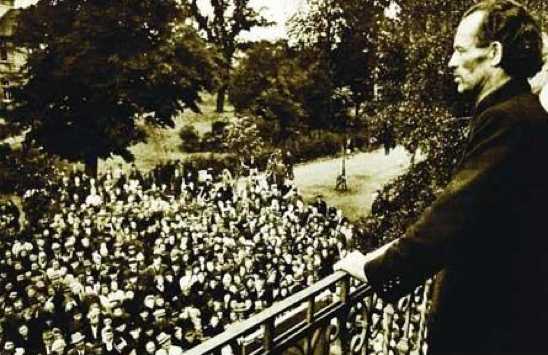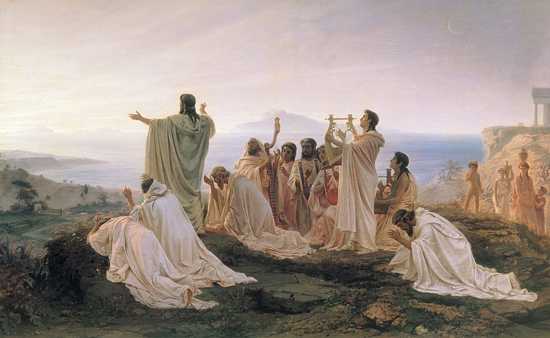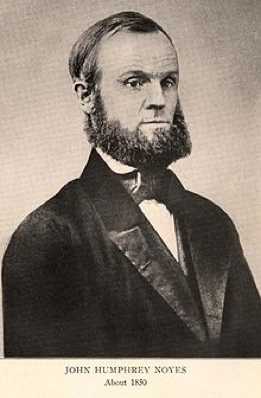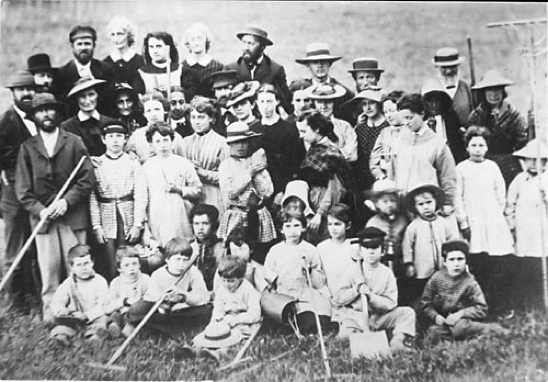Some of those included here attract the word “bizarre” for their own incredible assertions, while others do so for the outrageous way in which their own bureaucracies or the authorities around them behave. So the following list has been assembled from the tenth to most bizarre with a view to noting those that have spun on more eccentric orbits than the vast majority faith-based belief systems.
Whether as a method of escaping the material demands of the modern world or as a way to escape the hardships of poverty, sports has a vital and meaningful role in life. The people who reach the highest level of any sport receive the adulation and affection of a broad range of supporters and devotees. So it may be no surprise that the World Game has spawned its own bizarre spiritual phenomenon with, at the head of it, the one unquestionable champion, Diego Maradona. On the celebration of the great man’s thirty-eighth birthday, a handful of fanatics in the city of Rosario founded the Iglesia Maradoniana, that is, the Maradonian Church. As with all great movements, and soccer games, the beginnings were slow and the participants took time to instigate the path to their goal, so it wasn’t until 2001 that the first official meeting of the church was held. Less than ten years later, Iglesia Maradoniana boasts a membership of over 80,000 drawn from over 60 countries. Unlike other systems of belief that must use weekly gatherings to maintain their momentum and passion, the Maradonian Church has only two significant periods of structured worship each year. On October 29th and 30th, worshippers celebrate Noche buena y Navidad Maradoniana, Maradona, Christmas Eve and Christmas, which acknowledges the birthday of the one true football God. Then on June 22nd, Las Pascuas Maradonianas, Maradona Easter, is celebrated to commemorate the day that Argentina defeated England in the 1986 World Cup quarter-finals with Maradona scoring the two goals for his country. Typically, Iglesia Maradoniana sets out some important tenets for her members and these can be largely reflected in the Ten Commandments of the church:
- The ball must not be stained, as D10S has proclaimed; 2. Love football over all things; 3. Declare your unconditional love of football; 4. Defend the colors of Argentina; 5. Preach the words of “Diego Maradona” all over the world; 6. Pray in the temples where he preached, and to his sacred mantles; 7. Do not proclaim the name of Diego in the name of a single club; 8. Follow the teachings of the Maradonian Church; 9. Let Diego be your second name, and that of your children; 10. “No see cabeza de term y sue no se the escape la tortuga.” (Meaning “don’t be a hothead and don’t let the turtle escape you”) D10S is a clever play on the Spanish word for God, Dios, with the inclusion of the jersey number of the infallible one of the football world, but the church is not all tongue in cheek. Like many followers, one of the Ten Apostles of the church has been quoted as saying, “The church isn’t just a bit of fun. This is a serious celebration of our eternal love for God. I may have only been part of the church for two years but I was born ‘Maradonian’.” While there are those who will always see as bizarre the passion of sport that leads grown men to proclaim Maradona as God and, although Diego Maradona himself is reluctant to acknowledge his deity, perhaps the truth is hidden in one of his most famous or infamous moments on the soccer pitch. The second of Maradona’s goals in the quarter-final of the 1986 World Cup has long been revealed to have been scored with his hand. But when this was put to the incarnate God himself, his response was simple, that the triumph was assisted by the “Mano de Dios”, the Hand of God.
Inspiration for belief can come in a variety of ways and not every spiritual leader can hope for a “Road to Damascus” moment to point them toward their true calling. But Oberon Zell-Ravenheart founded the Church of All Worlds through a novel, if not bizarre, means by basing his neo-pagan religion on – a novel. While many religions accommodate and assimilate the belief systems around them, few pick up whole slabs of fictional religions and make them their own. Based on a religion from “Stranger in a Strange Land”, a science fiction novel by Robert A. Heinlein, the Church of All Worlds includes aspects of Science Fiction, elements of Greek Mythology, handfuls of contemporary fiction and a healthy smattering of Druidry. Of course, the growth of a system of belief from Science Fiction can hardly be considered bizarre, unless others like Jediism and Scientology were to be labeled bizarre as well. However, the Church of All Worlds has tried to remain contemporary and has now dipped into more current fiction to create The Grey School of Wizardry, which has remarkable similarities to Hogwarts School of Witchcraft and Wizardry from the Harry Potter novels. Educational supplies can be purchased through Magick Alley and its Grey Council boasts an extensive list of practitioners including the longest continuously-practicing Wiccan in the world, who had “a mystical experience in the arms of his first fiancée” and was initiated soon after into Gardnerian Witchcraft. Perhaps this system of belief would seem less unusual if everyone who had a mystical experience in the arms of their lover immediately entered a branch of Witchcraft. With a Sacred Mission that works towards the reawakening of Gaia, the Church is firmly grounded in neo-paganism, yet some choices of language are surprising. Lurking Bear is a noted member of the Grey Council, an associated website carries a slogan that may well have been borrowed from a bar, “May You Never Thirst!” and the co-founder and wife of Oberon Zell-Ravenheart has taken a name that clearly represents the beauty of the rising day or the rising of Oberon, in Morning Glory Zell-Ravenheart. So it makes sense that the Church is administered by two bodies, the Board of Directors and the Fun Committee. The cynical would suggest that the use of such language and the inclusion of pop culture references and structures are all ploys to make the Church a commercial success, more so than a spiritual one. But, in maybe the most bizarre twist of all, the annual fee to enroll in the online Grey School of Wizardry is a negligible $30 for students under eighteen and $60 for those over eighteen. The cost to move from one level to the next is similarly negligible, which can only lead one to believe that, regardless of the bizarre conglomerate of fiction and fantasy, Oberon, Morning Glory and others of the Church of All Worlds are sincere in their beliefs and intentions.
Bruno Groening was a miracle-healer and teacher, who made few professions to greatness or god-likeness. He came to prominence in Germany in the latter half of the 1940’s, having survived World War II as a benign opponent to the Nazi Movement. As a healer, Groening drew on the divine energy of God to help cases of chronic illness and he encouraged his followers to “not be credulous” but to “convince yourself”. In all, there was little of Bruno Groening and his work that was bizarre, until he passed away in 1959. It was then that the Circle Of Friends took his humble insistence that his followers be sure of their faith to a radical level. To this end they began to document healings that they could attribute to Groening, demanding reports from doctors, medical professionals and veterinarians before and after the healing to justify the claim. This process was thorough and admirable, but somewhere in the midst of it the followers devised new and unusual approaches to the “Heilstrom”, the divine energy, that Groening had used. It was “realized” that, for the energy to work effectively, members of the congregation could not sit in any configuration but a series of even and parallel rows that all faced the photograph of Groening. This was so that the flow of the energy would be most efficiently channeled. Music at meetings was restricted to those tunes recognized to have shared the vibrational qualities of Groening’s “divine energy”. Cut flowers were symbols of death and could be placed near the photograph. Only potted plants could be used as these were still filled with the energy of life. As the Circle Of Friends has spread, the pressing focus of its members has moved away from the sharing of spirituality and the empowering love of God to the need to record, document and lodge healings that can be proven as the intercession of Bruno Groening. While there can be no doubt that the work of Groening himself was remarkable, the current standard of achievements dwells somewhere in the midst of chickens laying more contented eggs. Throughout history spiritual leaders have had their words, works and intentions modified and mollified to accommodate the whims of their followers. The Circle of Friends may be representative of the bizarre bureaucratic interpretations made by many stumbling followers that impose a system of belief on the work of great people.
Amidst the diversity of beliefs, either bizarre or banal, there are few that reject the opportunity to exclusivity. However, Ayah Pin succeeded in being both bizarre and banal while working enthusiastically to gather all believers of just about anything. This multi-denominational appeal was even more admirable given that his Malaysian home was in the very bosom of Islamic fundamentalism. Sky Kingdom, the commune and sect founded by Ariffin Mohammed, who was later known as Ayah Pin, was open to most religions as Arrifin proclaimed himself the reincarnation of the gods of Islam, Christianity, Buddhism, and Hinduism. In contrast to the paranoid machinations of the State endorsed religion that worked itself into a lather trying to silence it, Sky Kingdom pursued a convivial and ecumenical approach to religion. They even went so far as to host a Christian group, which was a rare and dangerous venture in an environment where the rule of Sharia law was so powerful. In evidence of this power, Sky Kingdom and its followers were subject to continuous persecution and often members were arrested and charged with offenses under Sharia Law. Appeals against prison sentences and fines were lodged on the basis that those charged had renounced Islam and so were no longer subject to Sharia Law. However, the federal court dismissed the appeals on the basis that the guilty parties were Muslim at the time that they had committed the offenses. Aside from the bizarre behavior occurring around it, Sky Kingdom must be acknowledged as having one of the most bizarre places of worship imaginable. In their typically inoffensive style, they constructed a two-story teapot. Cream in color and complemented by a proportionally sized blue vase, these building were designed to symbolize the “love pouring from heaven” and the purity and purifying properties of water. Sadly, there was no Brahman bull-sized teabag in Ayah Pin’s disciple’s dream, which was the inspiration for the architecture. A similarly impressive big, yellow umbrella provided shade in the compound as “a place for people to take shelter beneath God”. There was also some tenuous link in the umbrella to the nine planets of Hinduism, but some visitors found that hard to spot. Officials from the Besut Land Office demolished the buildings of Sky Kingdom on August 1st, 2005, using bureaucratic justifications to confiscate the land. Ayah Pin was forced into exile in Thailand and, even though the remnant members of the commune elected a new leader, they now live in such fear that they turn off all the lights in the commune should a car be heard approaching at night.
One that springs into the mire without a bean of hesitation has to be the Pythagorean Circle of Friends. While Pythagoras was a master mathematician and a charismatic philosopher and teacher, he also drifted into the realm of the mystics. So great was his fame that he established a commune, consisting of the inner circle, or Mathematikoi, and an outer circle, the Akousmatikoi. Both levels of followers were devoted to his teachings and the more they praised his name, the stranger the rules became. It wasn’t long before he considered himself semi-divine and persuaded his followers of the reality of reincarnation and the transmigration of the soul. He reportedly was convinced of this when he saw a man beating a dog and called for the beating to stop because he recognized the voice of deceased friend in the yelps of the dog. Logically, as you would expect of Pythagoras, he quickly pointed out that if people could be reincarnated in animals, then eating them was not really polite. Vegetarianism was the order of the day, although probably something green with a Greek dressing would have been the order most days, but lentil soup could have been questionable. Lentils are close to beans in the legume family and beans were banned by the big man, but more of that later. The Pythagoreans system of belief recognized that, at its most basic, reality is mathematical in nature. This was reflected in music, astronomy and, of course, mathematics. The numbers themselves held meaning, such as, one is the number of reason two is the first female number, that of opinion three is the first true male number, the number of harmony four is the number of justice five is the number of marriage (2+3) six is the number of creation (2×3) It also helped that all numbers were rational, so even nature could be explained rationally. But when one of his followers, Hippasus, proved to Pythagoras that the square root of two was irrational, Pythagoras did the only thing a rational religious leader could. He had him drowned. Among other rules of Pythagoreanism were that one should never stir the fire with an iron, never touch a white cock and never pick up what has fallen. However, there were others that probably were more worrying in the days of Pythagoras than they are now, such as, women and men are equal and all property should be communal. Although Pythagoreanism lived on for centuries, but the stringent rules were probably going to be the death of it, as they were for its founder. Pythagoras, when being chased by soldiers came to field of beans. With the choice of trampling the sacred legumes or facing death, he chose to abide by his own laws and was speared where he stood.
If a belief system was to gain the title “bizarre” simply because it acknowledged the divinity of a man, then everything from Christianity to Buddhism would have to be included. With the proportion of the human race that would be included, it would almost be bizarre, or at best weird, to not hold such a belief. But the belief system of Yaohnanen tribe on the southern island of Tanna in Vanuatu can be considered bizarre on the basis of whom they worship as their deity. These natives are convinced that Prince Philip, consort of Queen Elizabeth II, is the embodiment of a spirit that was born of the volcano of their island, the pale-skinned son of the mountain spirit. This is the same Prince Philip renowned for insensitive and racist comments such as, “If you stay here much longer, you’ll all be slitty-eyed” (to a group of British students in China), “It looks as if it was put in by an Indian.” (Commenting on an old fuse-box in a factory) and “Still throwing spears?” (Asked of an Australian Aborigine). The Yaohnanen tribesmen carry out ceremonies and rituals including a special festival on June 10th, Prince Philip’s birthday, to which neighboring tribes are invited. Their expectation is to see the Prince return to them and when he doesn’t they, like all good disciples, know that his spirit is with them even if he can’t be there in person. The basis of the Yaohnanen belief is rooted hundreds, perhaps thousands of years ago in the tale of the son of the mountain spirit who ventured across the seas to find a powerful woman to marry. Unlike themselves, for they were only human, this spirit would have pale skin. In the late 1950’s to early 1960’s, the devout Yaohnanen became aware of a tall, pale-skinned man who had married perhaps the most powerful woman on earth and they began to pay homage to Prince Philip. In 1974 their faith was strengthened by a visit by Prince Philip and Queen Elizabeth II. This was seen as the son of the mountain spirit returning to show them his wife. Prince Philip is well aware of the cult and, while not encouraging perceptions of his “god” status, has sent photographs and other gifts to the tribe including one of himself holding a ceremonial club. Pointing to the photograph the chief proclaims, “He’s a god, not a man.”
In consideration of a “System” of belief, Solipsism does struggle with some of the more obvious features of other systems of belief. There is no ritualistic adherence to dogma, no ceremonial sequence of rites and no prayerful adoration of a deity. This is largely because the Solipsist believes their every whim is dogma, their daily routines are the rites of their belief and that they are as close to deity as anything is going to achieve. In short, Solipsism is the belief that the world and everything in it is the construction and product of one mind, that of the Solipsist. The rest of the world doesn’t really exist until the Solipsist thinks of it consciously or unconsciously. René Descartes laid the groundwork for Solipsism through his introduction of “methodic doubt” into the world of philosophy and, in turn, his questioning of all our physical senses until he resolved the search for existence in the brilliant “I think, therefore I am”. Unfortunately, it was only a small, but enormously bizarre leap for the Solipsist to transform this five word pillar of philosophy to “I think, therefore I only am!”, possibly followed with “So you can all sod-off until I think about you again.” Of course, Solipsism is a very convenient system of belief because most of the world’s, and indeed life’s, major problems can be dismissed with, “I’ll think about that tomorrow when I have time and if I don’t get around to it there’s no great bother as it never really existed anyway.” However, the introspective Solipsist would have a great deal more trouble in facing the suffering and torment of the world as they would have to question why they keep thinking of such horrid things. Given the chance, most of us would like to see the world full of light and happiness and only our worst enemies would be banished to famine and tsunamis. How then can the Solipsist live with themselves when they see hunger in developing countries and terrorism?
While there is often a temptation to sneer and ridicule beliefs that diverge from the norm, it is important to maintain an objective view of the all credos as being genuine attempts by religious leaders to satisfy the spirituality of their followers. Such a spirit is essential to see the Oneida Community, established in New York State in 1848, as John Humphrey Noyes’ honorable effort to bring a true sense of Christianity to the world; without this spirit he may be seen as just a dirty old man. The theological basis of Noyes’ community is as supportable as many sects that separated from the Church throughout history. Among his teachings was the claim that Jesus actually returned to the world in 70 AD One could expect that this would have been sound cause for a significant shift in many teachings and developments of Christian teachings, but Noyes didn’t seem to take advantage of the profundity of this. Rather he turned his teachings towards the nature of relationships in the community. The most significant of these appear to be Complex Marriage, Ascending Fellowship, Male Continence and Mutual Criticism. The most thoughtful married reader would have to be thinking that marriage is complex enough as it is, how could Noyes make it even more so? He did this by removing the monogamist basis of marriage. In fact, everyone in the community was married to everyone. This meant that every member could share their member with every other member and, indeed, should. If two people appeared to be becoming exclusive, they were separated for a specific length of time to let the passion dissipate. Noyes recognized that this was especially important with virgins and the young. To avoid virgins associating only with other young people, Central Members, who were older and could provide more adequate spiritual guidance, would select a virgin to introduce to the mysteries of Complex Marriage. Through this process of Ascending Fellowship, the young were taught the attitudes and process of the Community. The Oneida Community was built on a tenet of equality and women were given all the same rights as men, including the right to select a virgin the process of Ascending Fellowship. However, only women who had passed through menopause could take on this role. This was because of the teachings that valued every seed and abhorred unwanted pregnancy. This teaching was formalized in the practice of Male Continence, which was the suppression of ejaculation for any purpose but procreation. Unlike the Withdrawal method of birth control or simple abstinence, Male Continence was couched in a community that actively encouraged sexual intercourse, but discouraged wanton ejaculation. While many scoff at the notion, statistically it is worth noting that the live birth rate in regard to total population in New York State in 2009 was 1.26%, but in the Oneida Community of 250 people in the 1850’s the same comparison was 16% with 40 live births. Given the eccentric and rigid nature of the practices of Oneida, it would be understandable that a process to maintain the principles was essential. The one employed was Mutual Criticism, through which a member could be confronted with the criticism of one of the many committees of the community or of the community as a whole. These were almost always directed toward the ways in which the member had detracted from “family unity” and the consequences were often humiliating experiences. Throughout the 1850’s, 60’ and 70’s, the community grew and new communities were founded, but with the succession of John Humphrey Noyes’ son, Dr. Theodore Noyes, to the leadership of Oneida cracks began to appear. His agnosticism was probably a stumbling point, but of greater concern was the rigidity of his rule and many community members were disaffected. By 1879, the concept of Complex Marriage had to be abandoned and the communities dispersed into the general population. As a system of belief, Oneida seemed to move away from the more heavily religious aspects of other bizarre examples, but the practices and principles of the community certainly demanded a dedication comparable to the most devout.
The argument over the reality of Climate Change and Global Warming may rage around the world, but it is hard to find opposition to the concerns raised around over-population. So great is the problem that China, a country whose standing as a superpower is built on the size of its population, has conceded to implementing the infamous One Child Policy. This policy limits couples to one child and imposes fines and even forced sterilization in the events of subsequent successful pregnancies. The Church of Euthanasia takes a “What’s done is done?” attitude to children already present, but steps up the bizarre scale by promoting the use of suicide, abortion, cannibalism and, of course, sodomy as means of addressing the population issue. Proclaiming itself as “a non-profit educational foundation devoted to restoring balance between Humans and the remaining species on Earth”, the Church of Euthanasia is a vocal opponent to everyone from anti-abortion groups to those Jonathon King described as giving “the rotting the dead the will to live, go on and never die.” Started by the Rev, Chris Korda in Massachusetts, USA, the Church of Euthanasia has only one commandment, “Thou Shalt Not Procreate”. However, it does stress that all of its principle pillars, suicide, abortion, cannibalism and sodomy, are only supported as voluntary means of achieving the Church’s goals. This means that the Church does not sanction murder, rape and involuntary sterilization and cannibalism is limited to only eating people who are already dead. “Save The Planet, Kill Yourself” is a standard slogan and bumper sticker, but this and other similarly catchphrases paled into deathly insignificance against the Rev. Korda’s music video release, “I Like To Watch”. Using a blend of hard-core pornography and footage of the collapsing World Trade Center, Rev. Korda struck a discord with almost every level of society and provided invaluable publicity for the Church of Euthanasia. Prior to this, the Church had only really come to prominence through its conflicts with anti-abortion activists, an appearance on the Jerry Springer Show entitled, “I Want To Join A Suicide Cult” and through the demise of a 52-year-old woman who followed the Church’s directions on committing suicide by asphyxiation through the use of helium. In the wake of legal threats against the church as contributing to the death of the Missouri woman, the Church of Euthanasia removed the pages giving instruction in suicide from the website. When asked why he doesn’t kill himself, Rev. Korda answered with the tongue in cheek manner that seems to throw a playful gloss over the many disturbing recommendations of the Church of Euthanasia and explained that, “I’ll kill myself when I feel like it. Suicide is OPTIONAL, remember?”
The bizarre nature of Heaven’s Gate can be measured through either the quantity or quality of the cult’s remarkable behavior. From its beginnings as a seed sown during the near-death experience of one of the founders, Marshall Applewhite to the extraordinary end of thirty-nine members literally in the wake of Comet Hale-Bopp in 1997, Heaven’s Gate captured the imagination of its members and the stunned attention of the world. While recovering from a heart-attack, Marshall Applewhite faced a near-death experience and came out of it believing he and his nurse, Bonnie Nettles, were the chosen “Two” witnesses of the events of the Book of Revelations in the Bible. From there they formulated a belief system that recognized that the Earth was doomed to be “recycled” and the only way to survive this process was to escape from the Earth itself. This led to a number of possible courses of action, including the building of a spacecraft out of old tires and other secondhand material, which was an interesting echo of the “recycling” theme, and a secret method for members to achieve a level of consciousness above human. But the path chosen was the most bizarre. Thirty-nine members elected to hitch a ride on a spaceship that was hiding in the brilliant tail of the Comet Hale-Bopp and that was carrying Jesus. Unfortunately, Applewhite was sure that there was no way to reach their goal in their current form and persuaded the other thirty-eight travelers that would have to relinquish their humanity to make the voyage. He also convinced them to all wear the same uniform, which was predominantly black, but for the armbands reading “Heaven’s Gate Away Team” and the white patches on their brand new Nike tennis shoes. Perhaps the footwear was to cover the prospect that, rather than Jesus, the spacecraft carried the Greek Goddess of victory, or maybe his last words to his disciples were, “Just Do It!”. Some of those appalled by the mass suicide questioned the philosophy behind it. But Applewhite had foreseen this concern and he had explained the seeming inconsistency in his teachings by drawing a comparison to the Jewish sect at Masada in 73 AD, who were faced with violation and violent death at the hands of their Roman besiegers and chose death by their own hands as a dignified means of escaping the inevitable. In this way he justified the willful exit of the body as a purposeful attempt to reach the Kingdom of Heaven. Although the tragedy of thirty-nine deaths caused by misguidance and misunderstanding is terrible, there can be no doubting that the charismatic and bizarre beliefs of Marshall Applewhite must be acknowledged among the most disturbing.
